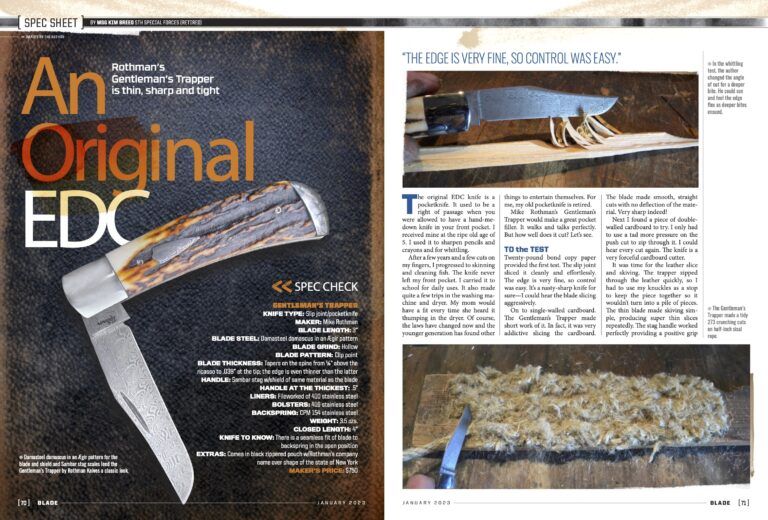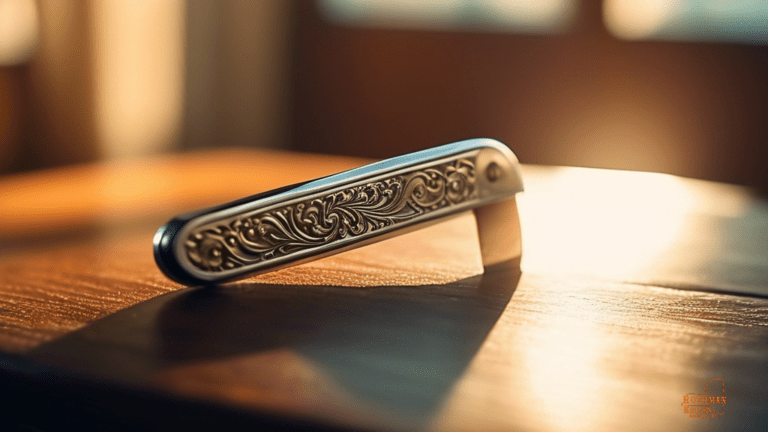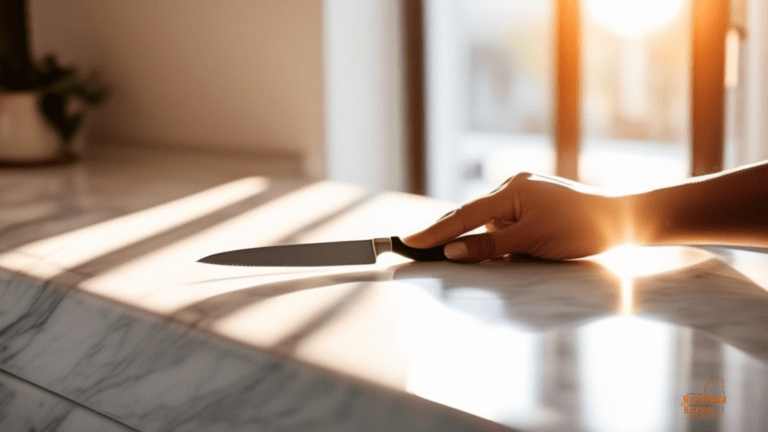You may think that caring for your knife handles is a tedious task, but it’s actually an essential part of maintaining the quality and longevity of your knives.
Whether you have wooden, plastic, or metal handles, each material requires specific care to prevent damage and keep your knives in top condition.
By taking the time to properly clean and maintain your knife handles, you can ensure that they not only look great but also perform at their best every time you use them.
When it comes to knife handle care, there are a few key things to keep in mind. Regular maintenance, such as cleaning off dirt and grime, is important for preventing buildup that can lead to deterioration of the handle material.
Additionally, protecting your knife handles from moisture and harsh chemicals can help prevent warping, cracking, or discoloration over time.
With the right techniques and a little bit of effort, you can keep your knife handles looking and performing like new for years to come.
Key Takeaways
- Different handle materials require specific care to prevent damage
- Protect handles from moisture and harsh chemicals to prevent warping, cracking, or discoloration
- Regular cleaning and maintenance prevent buildup and deterioration
- Choosing the right handle material enhances cutting experience based on comfort, aesthetics, maintenance, and performance
Different Types of Knife Handle Materials
Now, let’s delve into the diverse world of knife handle materials and discover which one best suits your needs.
When it comes to knife handles, there are various options to choose from, each with its unique characteristics and benefits.
From classic wood handles that exude elegance and warmth to modern synthetic materials like G-10 or Micarta that offer durability and grip, the choice is yours to make based on your personal preferences and intended use.
Whether you prefer the traditional charm of bone or stag handles or the sleekness of carbon fiber or titanium, selecting the right knife handle material can enhance your overall cutting experience.
Consider factors such as comfort, aesthetics, maintenance, and performance to find the perfect match for your cutting tasks.
With the wide array of options available, you’re sure to find a knife handle material that not only meets your practical needs but also resonates with your sense of style and identity.
Regular Maintenance and Cleaning Tips
To keep your knives in top condition, make sure you regularly wipe down the handles with a gentle soap and water solution. This simple step helps remove any dirt, grease, or food residue that may accumulate on the handle over time. It also prevents the build-up of bacteria, ensuring your knives stay clean and safe to use. Remember to dry the handles thoroughly after cleaning to prevent any water damage.
Here is a helpful table outlining some additional tips for maintaining and cleaning knife handles:
| Tip | Description |
|---|---|
| Avoid harsh chemicals | Stay away from abrasive cleaners or strong chemicals that may damage the handle material. |
| Use a soft cloth or sponge | Opt for a soft cloth or sponge when cleaning to prevent scratches on the handle surface. |
| Apply a protective coating | Consider applying a protective coating to certain handle materials to enhance durability. |
| Store knives properly | Store your knives in a dry place away from moisture to prevent handle damage over time. |
By following these simple maintenance and cleaning tips, you can ensure that your knife handles remain in great condition for years to come. Taking care of your tools not only prolongs their lifespan but also enhances your overall cooking experience.
Removing Stubborn Stains and Residue
When tackling stubborn stains and residue on your knife handles, remember to use gentle cleaning methods to avoid damaging the material.
Begin by mixing a solution of warm water and mild dish soap, then use a soft cloth or sponge to gently scrub the affected areas.
Avoid using harsh chemicals or abrasive scrubbers that could potentially scratch or weaken the handle material.
For particularly stubborn stains, you can try using a paste made from baking soda and water.
Apply the paste to the stained areas, let it sit for a few minutes, then gently scrub with a soft-bristled brush.
Rinse the handle thoroughly with clean water and dry it immediately to prevent any water damage.
Remember, patience is key when dealing with stubborn stains, so take your time and repeat the process if necessary until the handle is clean and residue-free.
Moisture Protection and Prevention
Is it possible to prevent moisture damage on your knife’s handle simply by drying it thoroughly after each use? Absolutely! By taking the time to wipe down your knife handle with a clean, dry cloth after each use, you can significantly reduce the risk of moisture seeping into the material and causing damage over time. This simple step not only helps to keep your knife looking its best but also prolongs its lifespan, allowing you to enjoy using it for years to come.
To illustrate the importance of moisture protection and prevention, let’s take a look at the following table:
| Moisture Protection Tips | Benefits |
|---|---|
| Dry knife handle after each use | Prevents moisture damage |
| Store knives in a dry environment | Reduces risk of rusting |
| Use a protective coating on wooden handles | Adds an extra layer of protection |
By following these moisture protection tips, you can ensure that your knife handles stay in top condition and are ready for any culinary task that comes your way. Remember, a little care and attention can go a long way in preserving the beauty and functionality of your knives.
Long-Term Care and Preservation Techniques
Maintaining knife handles over time involves using specialized products and techniques to ensure their longevity and appearance.
To preserve the quality of your knife handles, consider using a high-quality wax or oil specifically designed for the material of your handle. This will help protect the handle from wear and tear, while also enhancing its natural beauty.
Regularly applying these products will not only keep your knife handles looking new, but also prevent any potential damage from occurring.
In addition to using specialized products, implementing preservation techniques is crucial for the long-term care of your knife handles.
Avoid exposing them to extreme temperatures or prolonged sunlight, as this can cause the material to warp or fade.
Store your knives in a cool, dry place when not in use to prevent any unnecessary damage.
By following these simple yet effective preservation techniques, you can ensure that your knife handles remain in top condition for years to come.
Frequently Asked Questions
Can knife handles made of wood be safely cleaned in a dishwasher?
No way! Putting wooden knife handles in the dishwasher is like asking a fish to climb a tree – it just ain’t gonna work. Stick to hand washing to keep them looking sharp!
How often should knife handles made of synthetic materials be replaced?
You should replace knife handles made of synthetic materials every 2-5 years, depending on usage. Regularly check for wear and tear, as a worn handle can affect the safety and comfort of your cutting experience.
Is there a recommended method for restoring the color of faded knife handles?
To restore the color of faded knife handles, try gently sanding the surface to reveal the vibrant hues beneath. This simple technique can breathe new life into your beloved tools, creating a sense of renewal and connection.
Are there any special considerations for cleaning knife handles with intricate designs or patterns?
When cleaning knife handles with intricate designs or patterns, be gentle and avoid harsh chemicals that could damage the details. Use a soft cloth and mild soap to gently clean the handle, preserving its unique appearance.
Can knife handles made of natural materials, like bone or horn, be polished to maintain their shine?
Yes, knife handles made of natural materials like bone or horn can be polished to maintain their shine. Use a soft cloth and a gentle polish to bring out the natural beauty of these handles.
Last Updated: July 15, 2024
Verified and Approved by:

Mike Rothman
Founder of Rothman Knives
Like This Article?
Share with your friends
Table of Contents
Latest Articles
Keep Reading
-
Blade – January 2023
Featured Review from Blade – January 2023
-
From Tradition To Innovation: Exploring Historical Pocket Knives
Uncover the fascinating journey of historical pocket knives, from traditional roots to modern innovation. Dive into the craftsmanship and history behind these timeless tools today! Click to explore more.
-
Beginner’s Guide: Tips For Maintaining Knife Handles
Discover the ultimate guide for beginners on maintaining knife handles! Say goodbye to dull and worn-out handles with these essential tips. Click here to learn more about handle maintenance tips for beginners now!




